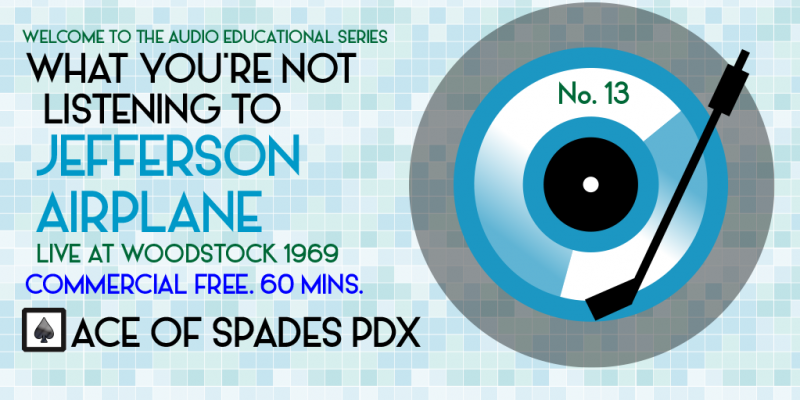Podcast: Play in new window | Download | Embed
People wish to romanticize Woodstock as all peace, love, flowers and hippies. Don’t get me wrong, there was plenty of all of that to go around. There was also a sea of trash, a heavy rainstorm that turned everything into mud, bad drugs, gridlocked traffic, lots of hang-ups and half day long delays. How bad was it? Woodstock was actually declared a disaster area by New York Governor Nelson Rockefeller, food and water ran out and the promoters went broke thanks to thousands of people who descended onto the farm where the festival was being held who broke down fences to get in for free.
Then, what is the appeal of this absolute mess, one that makes the Fyre Festival debacle two years ago look tame in comparison? La vie en rose, mes amies. (Rose colored glasses, my friends.) The three album set, its companion double album sequel (both mega-sellers in 1970 and 1971) and the Oscar-winning documentary not only were able to pull the promoters out of drowning in red ink, it gave everyone a truncated, you-wished you-were-here-with-us vibe so very strong that, and this is no joke, that literally millions more people actually said they went to Woodstock than actually showed up.
“Alright friends, you have seen the heavy groups, now you will see morning maniac music…”
Grace Slick, singer, jefferson airplane
With all that being said, there was no security, and by and large, most of the people were there for one thing: the music. The festival line-up, featuring everything from Indian sitar players, heavy metal groups, 1950’s throwback acts, hippies, blues artists, several unsigned bands, and just about everything else in between, was the glue that held it altogether. One of the hottest acts of the 1960’s, and the first to be actually confirmed to play the festival, went on after an 8 hour-delay with no sleep and high on LSD. They also happened to be an immensely popular rock band with a female fronted singer-songwriter in Grace Slick, an absolute rarity at the time.
That band was the Jefferson Airplane, which also boasted two other singer-songwriters of amazing quality, Marty Balin and guitarist Paul Kantner. Along with Spencer Dryden beating the living hell out of his drum kit as if his life depended on it, as well as ace guitarist Jorma Kaukonen, bassist Jack Casady and top session player Nicky Hopkins on keyboards, they pulled out all the stops, resulting in one of the festival’s true electrifying, classic performances.

This line-up, considered the classic version of the band, lasted only another half a year. The group also played what was supposed to be Woodstock West, supporting the Rolling Stones at the Altamont Speedway in December 1969. The Hells Angels provided security, being paid in beer. Airplane member Marty Balin was beaten unconscious by members of the Angels during their set; Meredith Hunter, an 18 year-old Black man attending the concert was also murdered by the Angels, all while cameras rolled.
Some people say Altamont was the end of the 1960’s. I argue that it was over at Woodstock, the last gasp of a generation that somehow forgot that apathy, not hate, would mark the end of their era.
Jefferson Airplane at Woodstock, August 17, 1969
- Introduction/The Other Side of this Life
- Somebody To Love
- 3/5 of a Mile in Ten Seconds
- Plastic Fantastic Lover
- Wooden Ships
- Volunteers
- White Rabbit
- The House at Pooneil Corners
Love to you all.
Ben “Bear” Brown Jr., owner
Host, Producer, Audio Engineer and Writer
“Copyright Disclaimer Under Section 107 of the Copyright Act 1976, allowance is made for ‘fair use’ for purposes such as criticism, comment, news reporting, teaching, scholarship, and research. Fair use is a use permitted by copyright statute that might otherwise be infringing. Non-profit, educational or personal use tips the balance in favor of fair use.”
